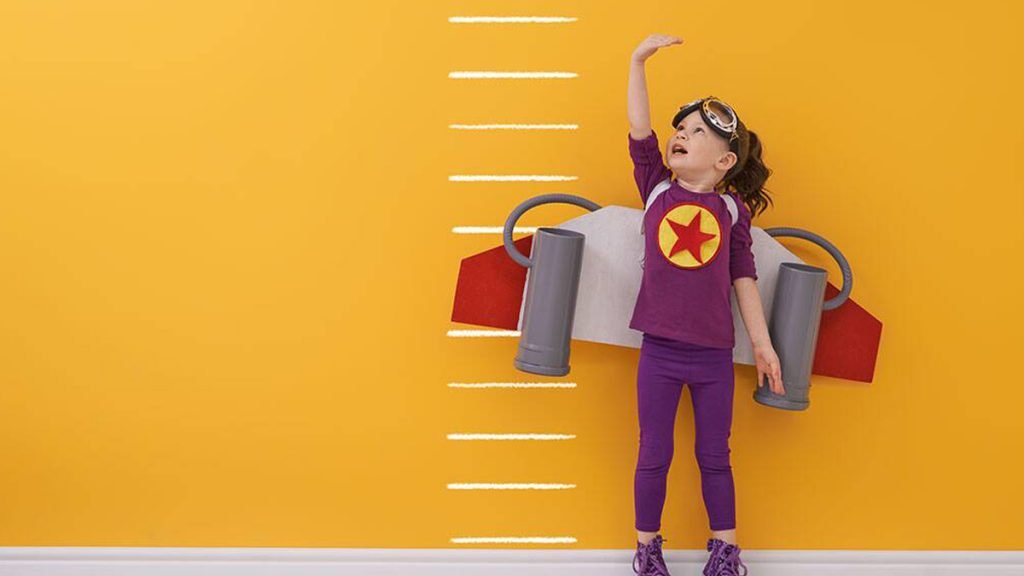If my children and I open their eyes in the morning and a dangerous animal is found in our house, then the topic of discussion is known, what will happen? My son’s first priority would be to suggest a cool name while my 3-year-old daughter would want to touch it. I have not yet taught them what to do if a tiger or a cheetah comes into the house. They should be handled with caution as such animals can prove to be dangerous. Whatever we can do as an adult and conscious individual is something we must have learned somewhere during our development. But here are some things my kids have learned on their own without my help. For example, not all children under the age of five are prejudiced against any disability.
Miss Atrat Zahra Naqvi is working as a psychologist at Wellingways and Sadaqat Clinic Lahore. He obtained his MSc Nafisat degree from Punjab University with First Class and Advanced Diploma in Clinical Psychology. He completed his professional training from Gangaram Hospital under Dr. Iram Bukhari. He worked at DHQ Hospital in Chiniot as a Psychiatrist on Excise Project. Seeing disabled people differently does not occur in children before the age of five. Here I will highlight five types of theories where children better accept disability while adults do not.
Shame on defecation is not found in children. Few days ago one of my son’s friend came to our house and my son acted to impress his friend. He showed him his magnificent collection of dinos and even more, he allowed him to enjoy the most precious part of his toy treasure, which was undoubtedly the highest way of honoring his friend. At the same time, he interrupted his playdate with an unabashedly loud declaration of “I have to potty” and ran off to the bathroom while he chatted with his friend. Also continued. Shortly after that, his friend also felt a similar need and he thoughtlessly asked for my help to complete the task.
People with any disability and their caregivers will easily understand this philosophy. Dependence on someone in the bathroom is seen as a taboo and such a person is seen as surrendering to others for any task outside the home. No healthy person can even think of taking help from someone else in bathroom routine. Even the thought of such a life would postpone death. While we have all forgotten that there was a time when we all generally depended on others for this task. Dealing with help seems like a daunting task.
My kids can’t tie their own shoelaces, can’t read a book, and we’ve already mentioned bathroom dependence. So they call others for all these tasks and when they don’t need help, they self-evidently tell that “I can do this work myself” if seen, I feel contempt for myself. Because I try to help them in these things too. In which they have special skills. A disabled person may ask for help many times, but eventually he will try to do something for himself. Self-harm can also occur. For example, you should never push someone’s wheelchair or open a door for someone unless told to do so. Children understand that unnecessary tasks complicate behavior. But the elders do not accept this.
We must first seek uniformity to promote individuality. Here I would like to mention a conversation I had with my son while we were watching Gangfu Panda. Suddenly, he said, “Kungfu Panda” sounds exactly like me. I replied that it doesn’t look like you at all.
He Wondered: Really?
After that I didn’t push too hard because the perception of the panda’s cartoon crackling was very different in his mind. Children’s favorite movies have many characters that adults may not like. Like (Ben10’s many Aliens) which are not at all impressive to adults but kids will definitely want to befriend them if they see them anywhere.
Apparently all these examples are taken from the world of fiction. But real world affairs are no different. Children embrace unusual things and consider things that people dislike as “cool”. Like my son has a mysterious relationship with Yummygosaurus and Kungfu Panda. Children see sameness, not difference, and I think they do so because they haven’t had much experience yet to determine what is normal.
Devices are Useful as Well as “Cool”.
When adults see someone in a wheelchair, they tend to think of that person as needy and constrained, and view the wheelchair as a handicap rather than a reason for mobility. While children do not adopt these concepts. Recently, my son expressed his wish to me that he wants to get a wheelchair. The reason behind this wish was that children were not allowed to play in the elevator in our building, but as soon as someone came in a wheelchair, they were welcomed into the elevator. Similarly, automatic devices are sometimes perceived by children in a very negative way and they use them according to their needs. Be it using a stroller or a stool in front of the sink or a cricket with a wiper, they find a solution to their needs. The environment around us determines what we can and cannot do.
Ask a child what the toy store door means to them. The world that is made for them. The entrance to it has a magical effect for them. For example, when I take my children to playland or museum, the effectiveness of this magic can be clearly seen on their faces. The environment that is created for us and the kind of experiences that we go through inform us of our abilities. For example, if my son wants to play with the sword in the museum, then this is not acceptable to me, because there are often differences of opinion in the conversation between my two children, and in view of this difference, they can suffer from frustration. How can a sword be a suitable toy for them, so I keep such dangerous toys out of their reach?
Often in this way they are disabled from achieving the things they love and this is the way they continue to learn how people with disabilities live in everyday life and also learn that certain tasks some things can be done and some things cannot be done. Along with this, their sense of connection with their surroundings also changes. I wish I could end my conversation with the happy conclusion that children are free from prejudices or that the next generation is more aware of disability. But unfortunately, the reality is the opposite. Children gradually learn during their development how to develop negative tendencies and stigmatizing tendencies.
As children get older, they don’t hesitate to point out individual differences, such as telling someone “you have yellow teeth” without feeling nervous, and when they do so in front of their parents. There is an immediate reaction and this reaction teaches the child that their behavior is not correct and the reaction teaches the child that it is shameful to be different from others and gradually over time this concept becomes mature. When the door to acceptance of individual differences is closed with criticism, children become cruel to their peers, resulting in social isolation and bullying.
Disability advocacy is acquired and learned through experience. Therefore, it raises a hope that by revising our messages, we can eradicate prejudice from the next generation. This is what I am doing with my children every new day.

